PROTECT YOUR DNA WITH QUANTUM TECHNOLOGY
Orgo-Life the new way to the future Advertising by Adpathway
“Light changes how you see the world.”
Unless you’re a photographer or filmmaker, you probably haven’t given much thought to the influence of light on what you see. That’s as true with action sports as it is with everyday life. As a filmmaker or photographer, the available light usually dictates the angles, the shots, and even the terrain that you’re able to shoot. Without adequate light, it’s much harder to get properly exposed, crisp shots. Which is why you don’t see that many action sports films shot in the dark.
But what if you provided your own light and filmed almost entirely at night? Theoretically, you could create exactly the shot you’re looking for. You could create shadows, illuminate angles of the terrain that wouldn’t normally be exposed, and completely control the vibe of the surroundings. Of course, doing so would be a monumental undertaking – something no one in their right mind would attempt, especially in the dead of winter. Right?
Well, that is exactly what Chris Benchetler set out to do with his Mountains of the Moon project. Calling it an evolution of his previous Fire on the Mountain film with Teton Gravity Research, this time, Chris partnered with Arc’teryx both as the title sponsor and as the fabricator of the incredible custom light suits made from Arc’teryx winter clothing. On the surface, it may be easy to think filming MOTM was just like filming any action sports film, just add lights. But in reality, producing and filming MOTM was a monumental undertaking that at times nearly broke cast and crew alike, and required an insane amount of tech, man-hours, and perseverance to complete.
Lighting
 Chief Lighting Technician Shane Treat
Chief Lighting Technician Shane Treat

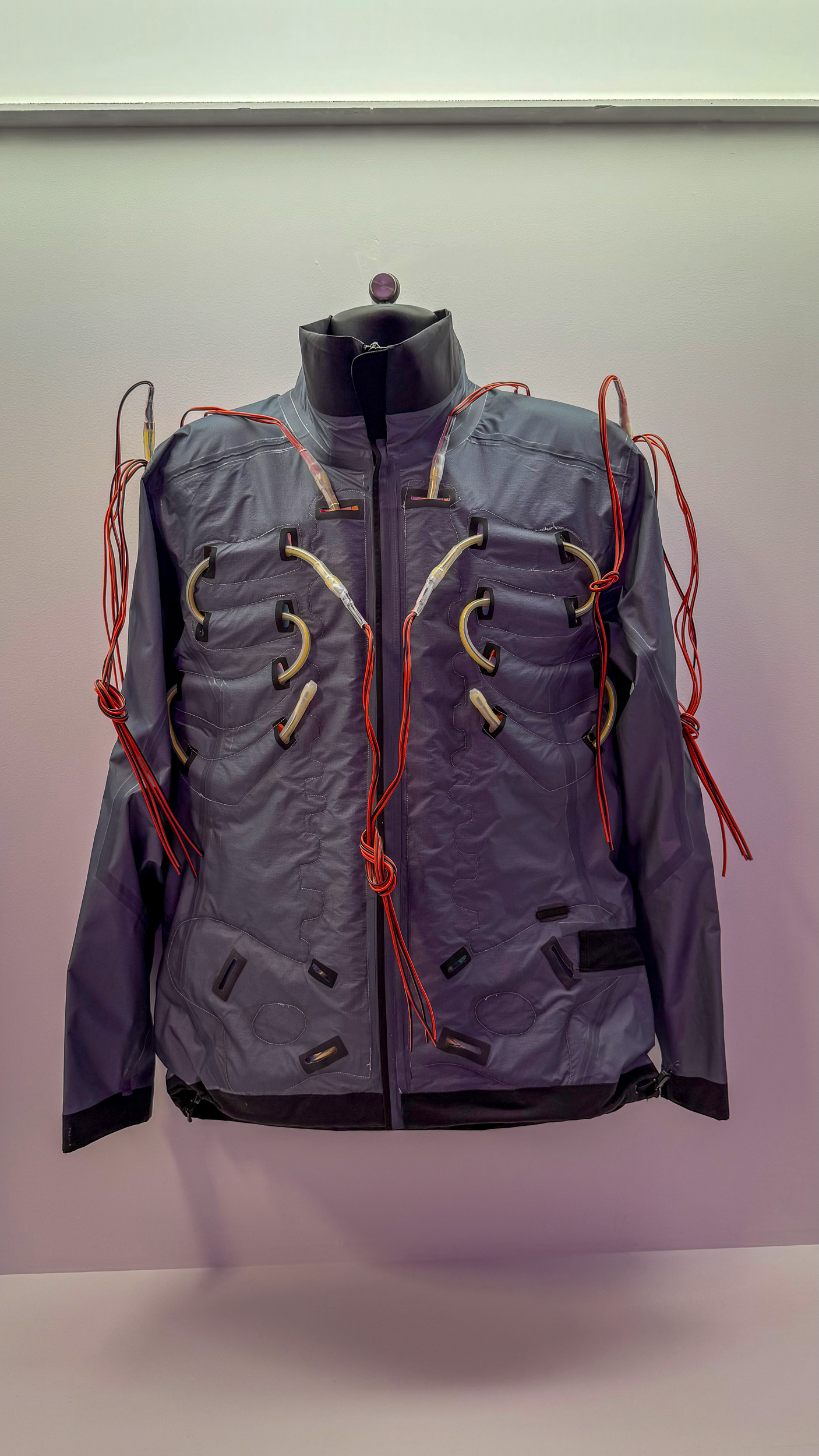

MOTM would not be what it is without the lights (and lasers). From the custom skeleton light suits to mountain bike wheels loaded with LED strips, the lighting for the athletes themselves was just as labor-intensive as the lighting for the terrain (maybe more). No one knows this better than Chief Lighting Technician Shane Treat. Chris challenged Shane to create a holographic suit where the skeleton sat off the outerwear so it was floating out in space. A far cry from the basic LEDs used in Fire on the Mountain and Afterglow, the suits were built around an advanced lighting system woven through the Arc’teryx outerwear, illuminating precision-cut reflective layers that dispersed the light to give the skeletons depth.
Working with the talented in-house cut and sew team of Arc’teryx, each light suit required over 100 man-hours to build, so when plans changed (like Grateful Dead Drummer Mickey Hart wanting to play drums in a suit on the mountain), Shane and the team faced many long nights to get a new suit put together. As Director of Photography, Tyler Hamlet put it, “all of a sudden, added stress on Shane, making sure he didn’t electrocute one of the greatest drummers of all time.”
Considering some of the suits would be used on the water or under it, electrocution was a real concern – as was just making sure they survived the filming with athletes potentially crashing, snagging suits on rocks, or making quick movements. With over 100 man-hours invested in each suit, and filming in remote locations in the middle of the night that took massive coordination just to get the whole crew there, a total suit failure was not an option.

At the premiere, I had a chance to dive a bit deeper with Shane on the tech and engineering that went into making the suits and wheels. Shane pointed out that the LED strips used are a flat ribbon cable. These ribbons will bend 180º in one direction, no problem. But bend them in the other direction, and they will break easily. To make more robust lighting systems, Shane took 5mm LED strips and doubled them back on themselves and soldered power leads to both sides, so if the LED breaks anywhere, it still has power. If there was a break, all that would happen is four pixels would go out, which would be an indicator to Shane that there was a break in the LED strip and allow him to find the break and repair it.
In order to further protect the LED strips and allow a full range of movement, the 5mm strips were housed inside 6mm ID tubing that was filled with powdered Teflon. This meant the LED strips would rotate inside the tubes rather than twist and break. Shane mentioned that the system worked so well that you could tie the tubing in an overhand knot and the LED strip wouldn’t break.
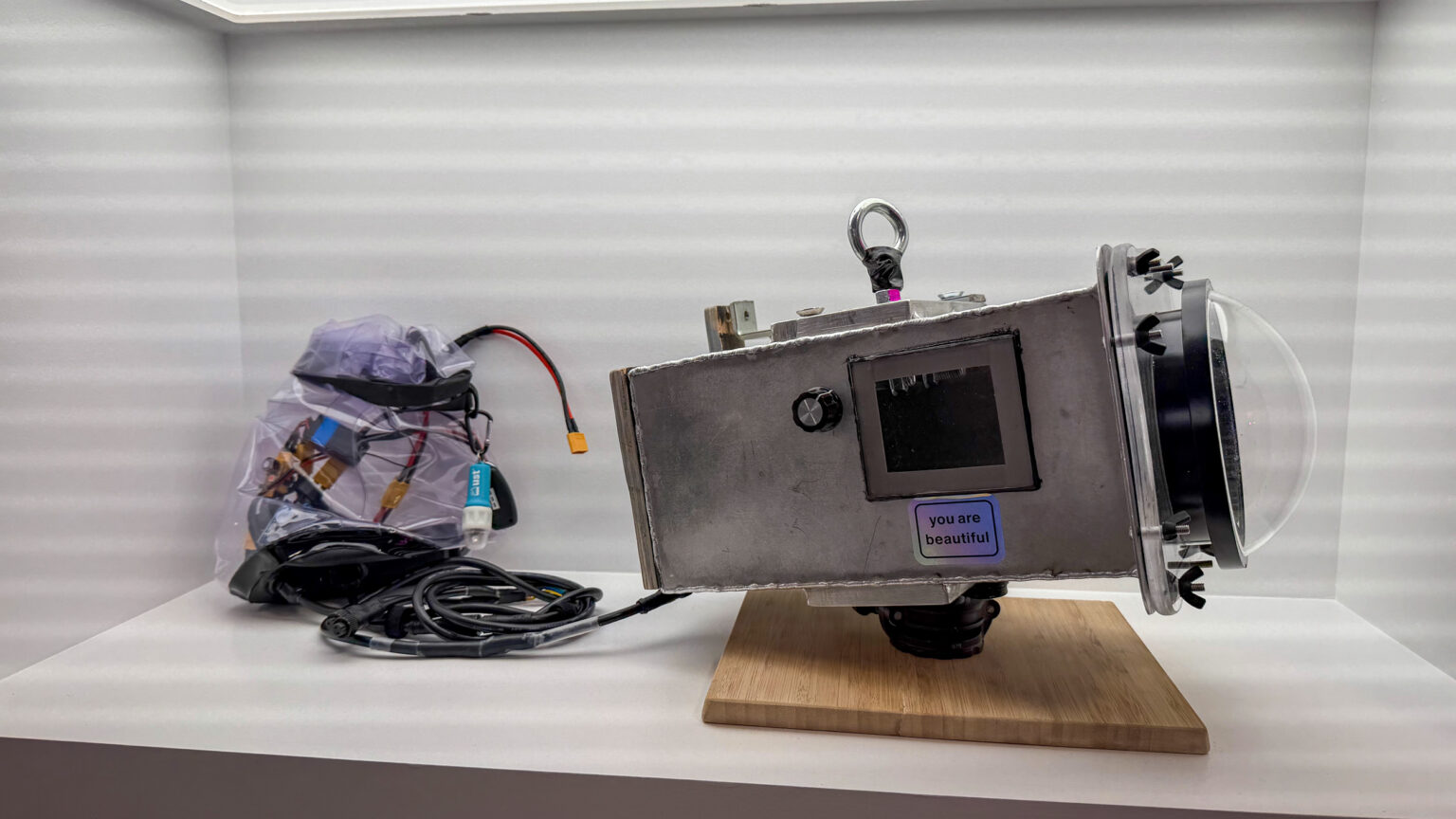
On top of making the LED system bulletproof, the MOTM camera crew also had to worry about the LED lighting flickering with certain camera settings. Apparently, there is an $80k device meant for the Hollywood lighting world that would remedy the issue, but Shane ended up “taking a 22.2 volt battery, bumping up the power to about 25 volts, and then cleaning the power back to about 21 volts.” The result was zero flickering at any framerate they tried.
MTB Wheels Proved the Hardest


But it was the mountain bike wheels that were the real challenge, according to Shane. As he put it, often these wheels are going upwards of 40mph through the air, and decelerating to zero on hard landings. The resulting shock was very hard on the electronics and required creative engineering to make them durable enough to withstand the shoot – which also happened to take place in absolutely pouring rain. The lighting also needed to be tunable – something they improved on as the filming went on.
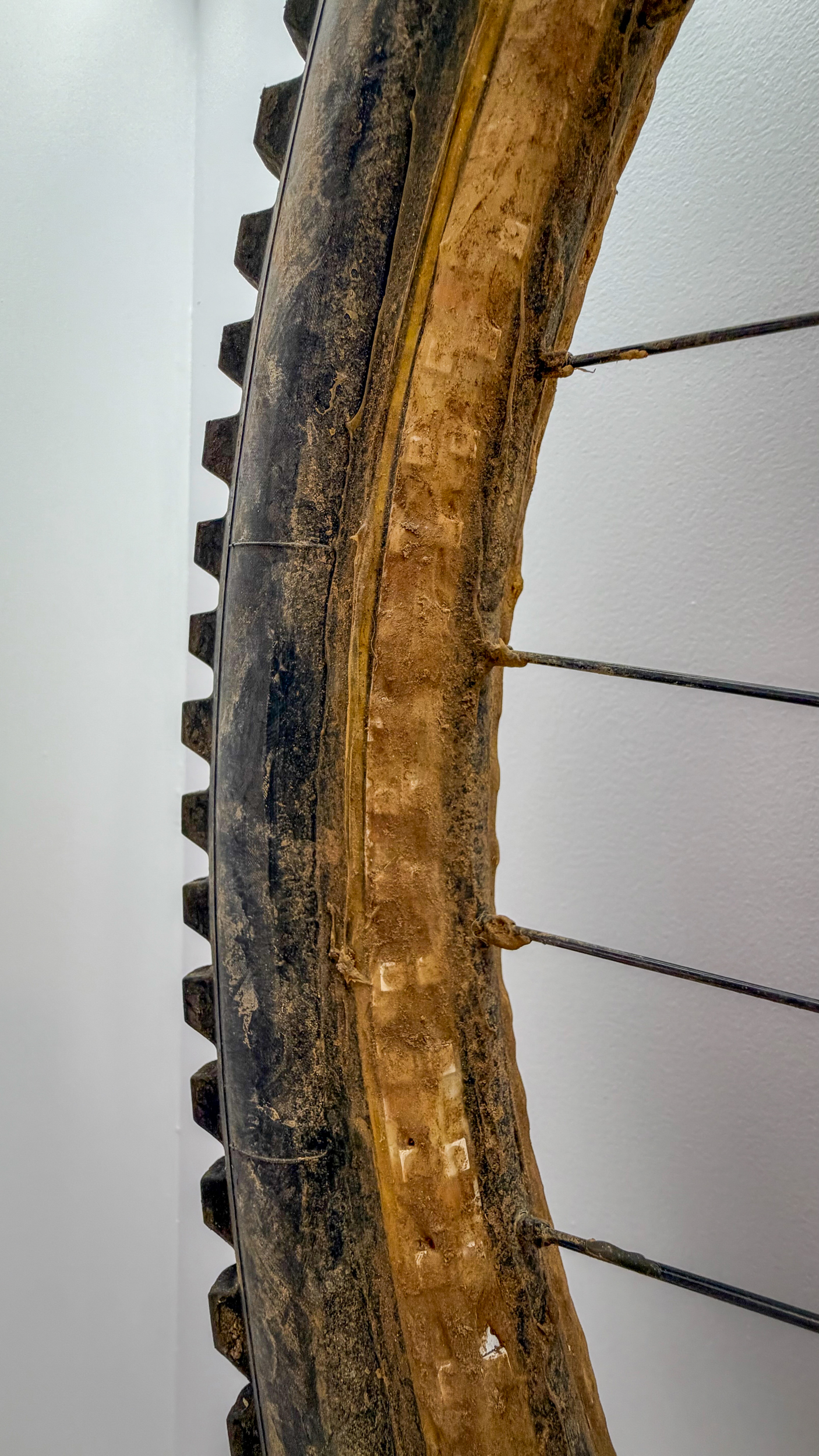
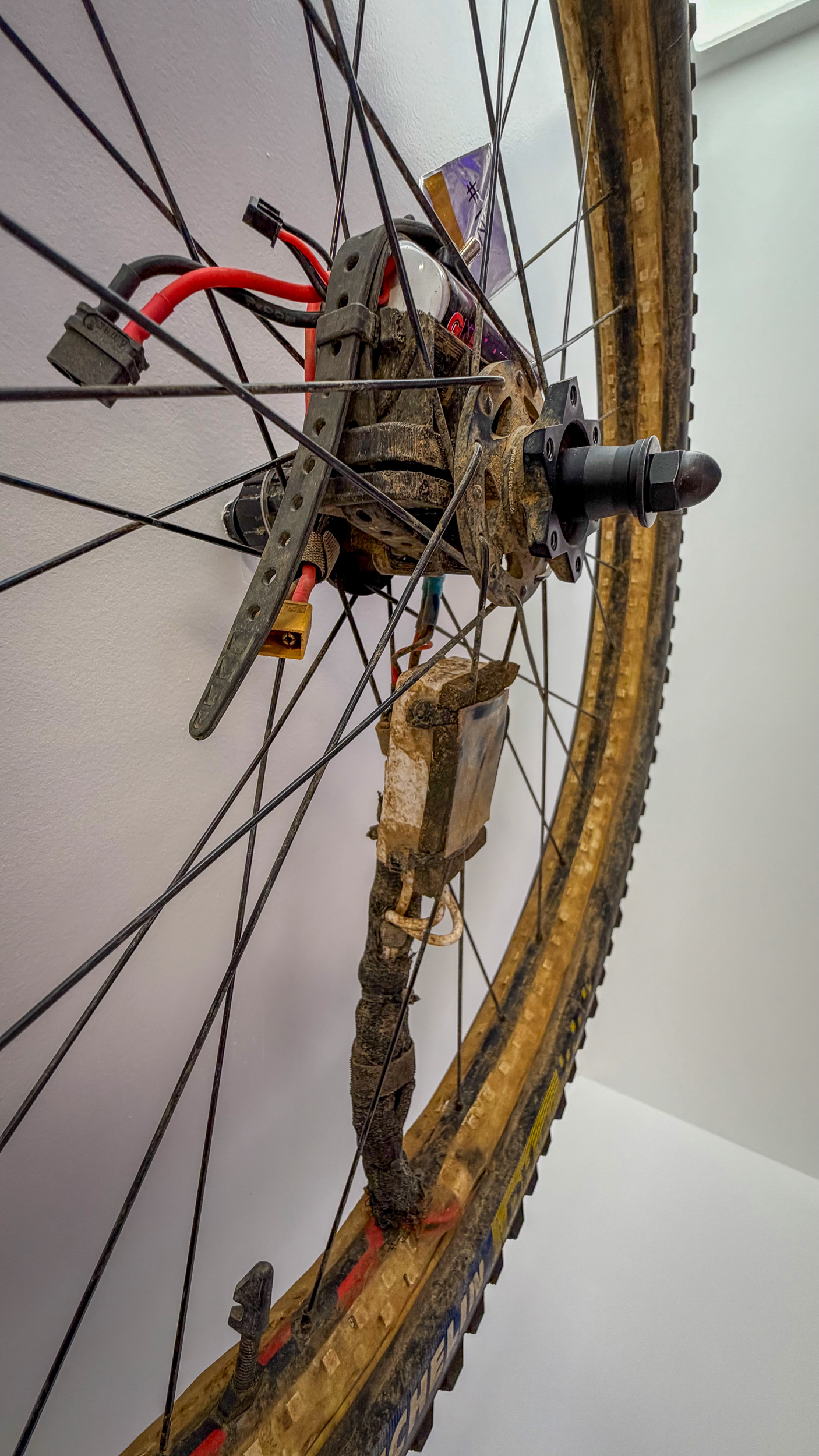
With all of the artificial lighting, the cameras needed to be set to pick it up, and if you’re picking up the lighting on the trees, the lighting from the suit and the wheels needs to be dimmable so it’s not overexposed. The end result was a two-part LED system with un-dimmable white lights on the side of the rims, and dimmable RGB lights in the center of the rims. The outer lights were straight 6000k white light that was intended to illuminate the forest and “help the whole thing integrate in, and reach out and touch the real world around it.” One of the problems of filming in the forest at night, is that all the plant matter is designed to absorb light. So to make the shoot work, and highlight the beauty of nature at night, the white LEDs helped illuminate the scene while the RGB lights added the color.
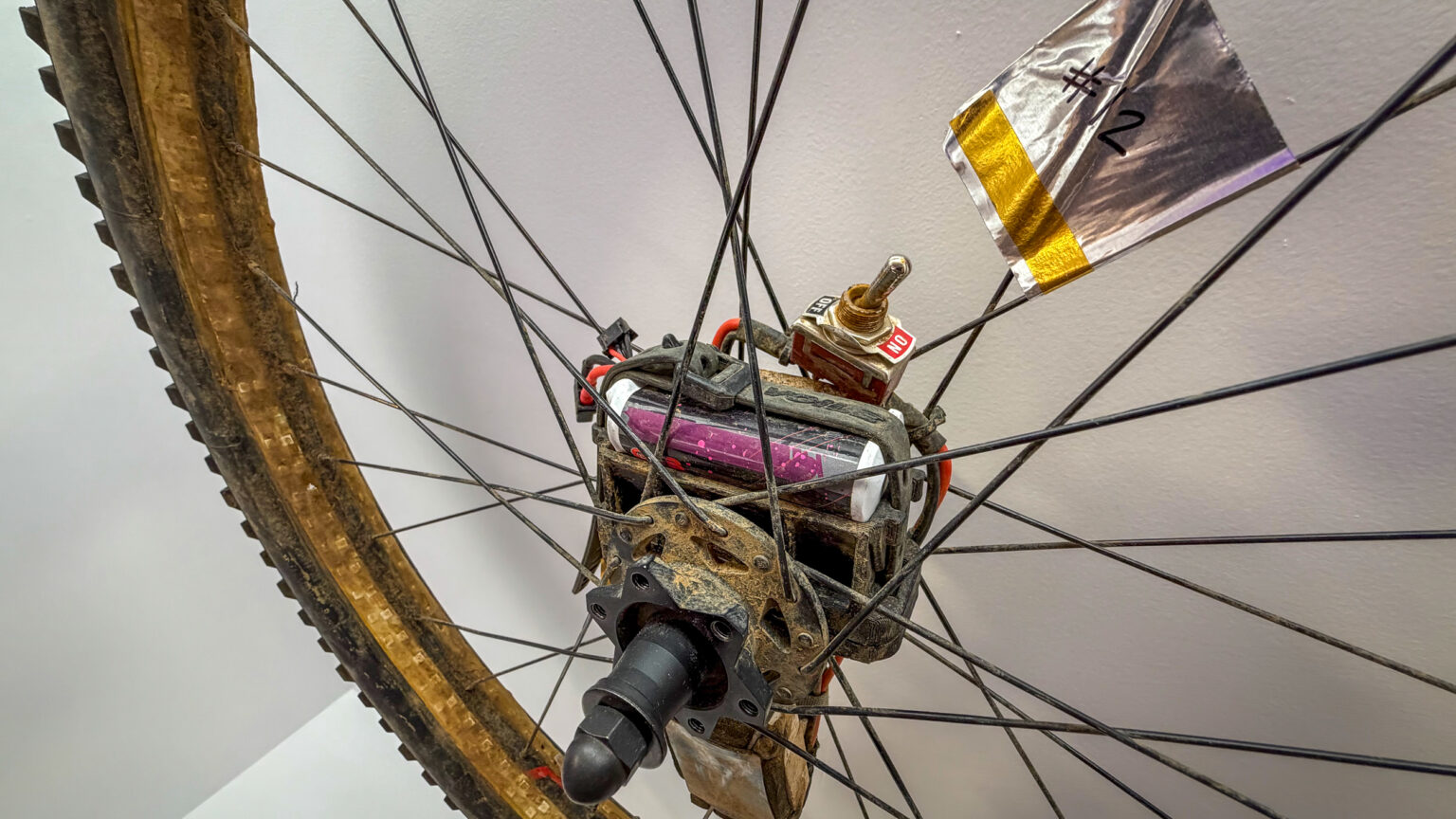
After some initial struggles with delamination of the LED strips, they were then mounted to the rims and completely covered and cemented in place with a clear sealant that made them weather and chemical-resistant, and bonded extremely well to the rim and tire (Shane couldn’t remember the exact material, but it was not silicone). At the center of the wheel, mounted to the hubs were lithium polymer battery packs along with wireless controls to allow the lights to be operated remotely, as well as emergency shutoff levers on the battery pack itself.
Like the suits, Shane never weighed the resulting setups, but the riders mentioned that due to how well the battery pack, wiring, and lights were balanced, it wasn’t as noticeable as they thought it would be.

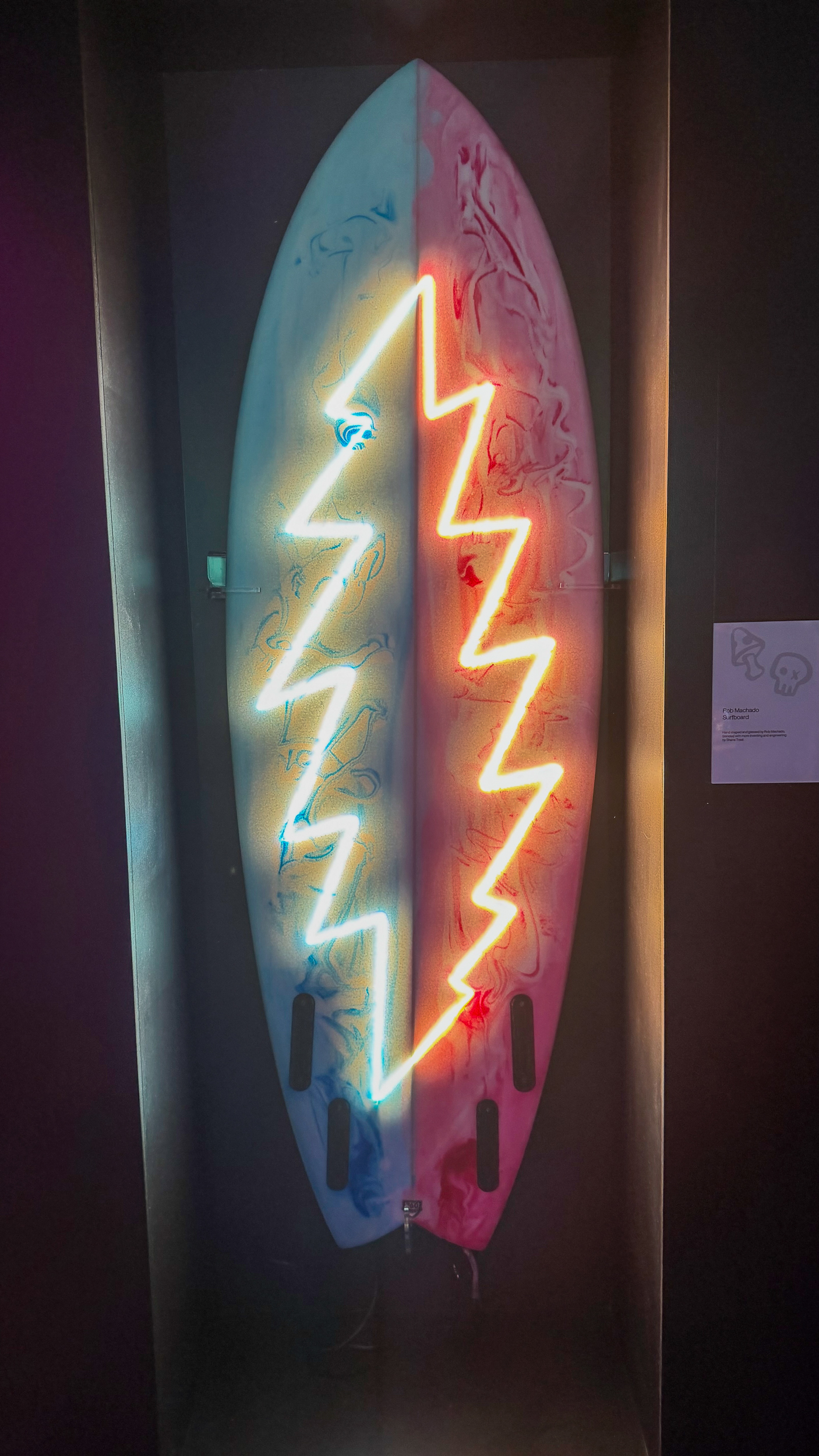
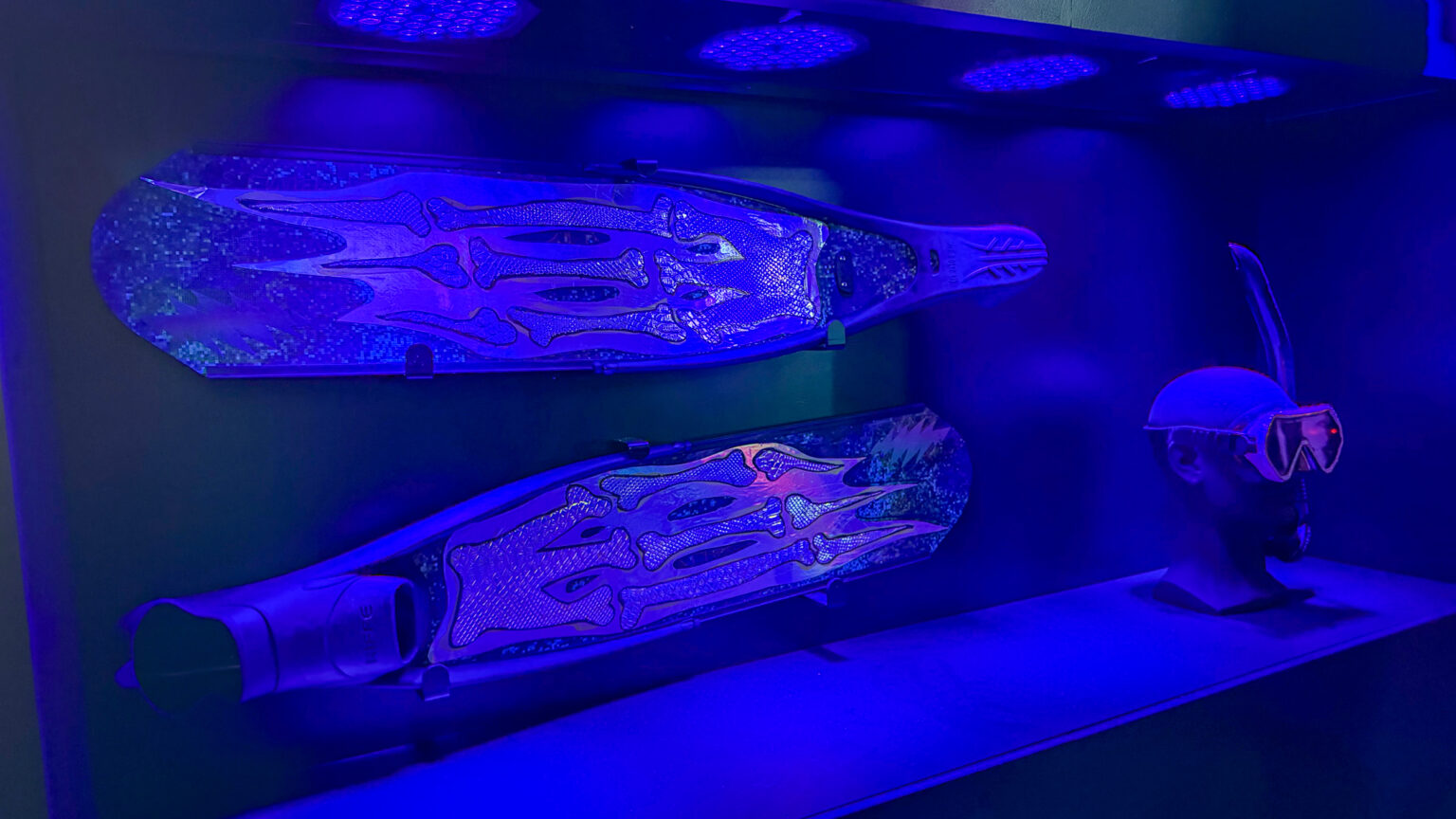
And that’s just the lighting on the athletes themselves. In addition to the suits, bikes, surfboards, jet skis, flippers, and other gear, the MOTM crew had to haul massive amounts of lights, lasers, equipment, and generators into the backcountry for each shoot. With most scenes shot at night, a typical shoot would be shot from 10pm to 5am, with the crew having to show up earlier and stay later to set up and tear down – all for about 10-15 days straight. Keep in mind that much of this was shot in the winter in brutally cold, windy environments with icy conditions at night and the real risk of avalanches.

You’ll have to watch the behind-the-scenes to really get a sense of just how much of an impressive feat the production of this film really is. But that’s one of the main things I walked away from the premiere thinking – just how incredible it is that this all came together at all. The sheer amount of work from everyone involved over a 2+ year period to put the final film together is simply mind-boggling.
The Athletes

How did Chris choose the athletes for the film? That was one of my questions that I posed to both Chris and some of the athletes themselves. Chris will tell you that it’s a combination of all of the best people he knows, at all the things – the best camera operators, the best lighting techs, and the best athletes. He really wanted to “hand select his band” and bring together a group of creative individuals who all contributed their own experience and creativity.
When I asked snowboarder Elena Hight, she added that it was a combination of athletes who weren’t ego-driven to be a part of the project – after all, most of the shooting was at night, and it’s hard to pick out individual athletes in many of the shots of the film. The athletes all get called out in the credits, obviously, but it feels like more of a collective that is working together to create art than individual athletes filming ‘video parts.’
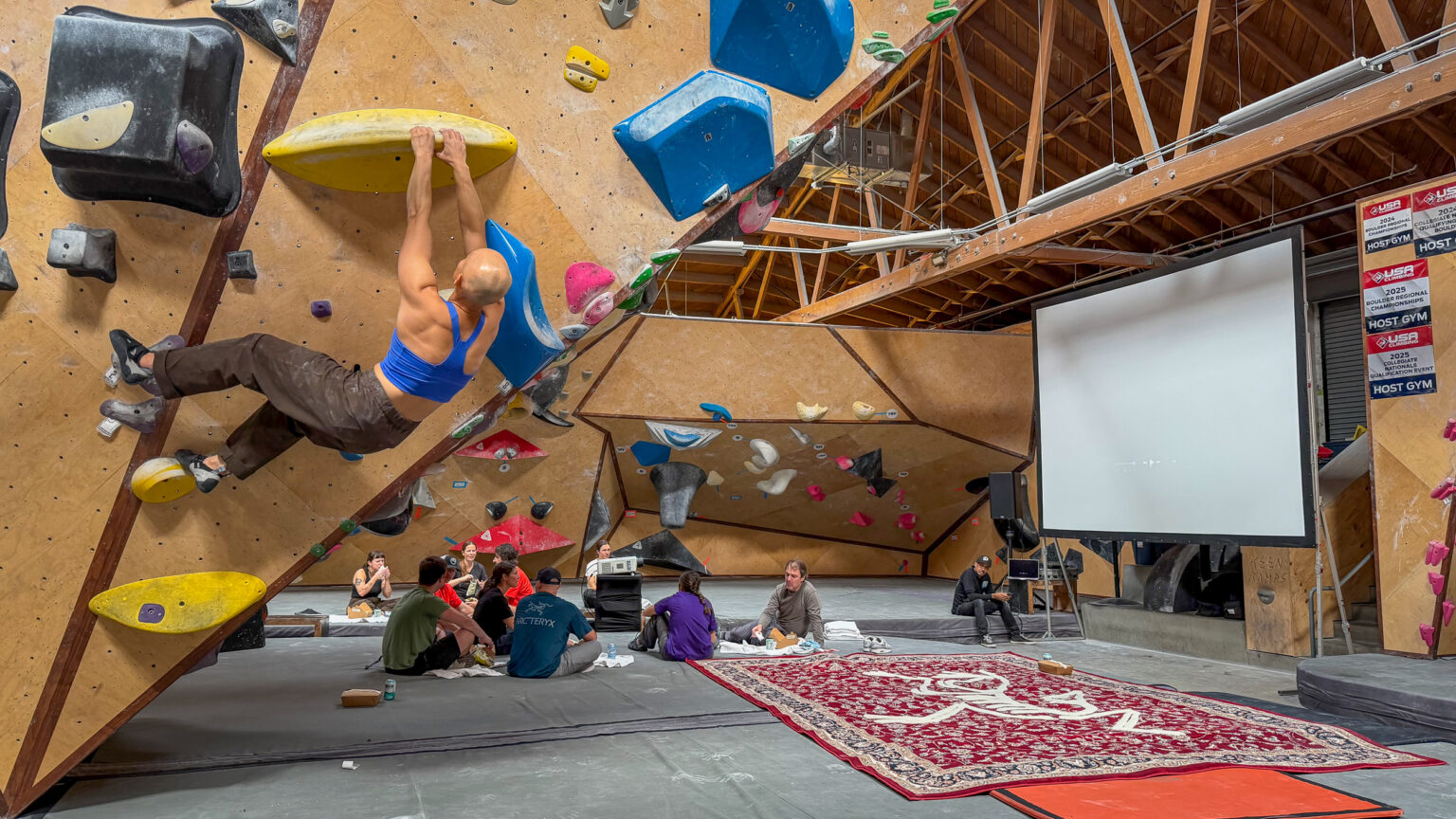
Climber Alannah Yip echoed that opinion, stating that “Chris put a lot of trust in a lot of people to bring their own creative vision to the project.” Both athletes also commented on the need to endure the grueling overnight shoots. Not to mention the ability to perform at a high level without the usual lighting one would actually use for night riding, night climbing, etc.
Music & Art
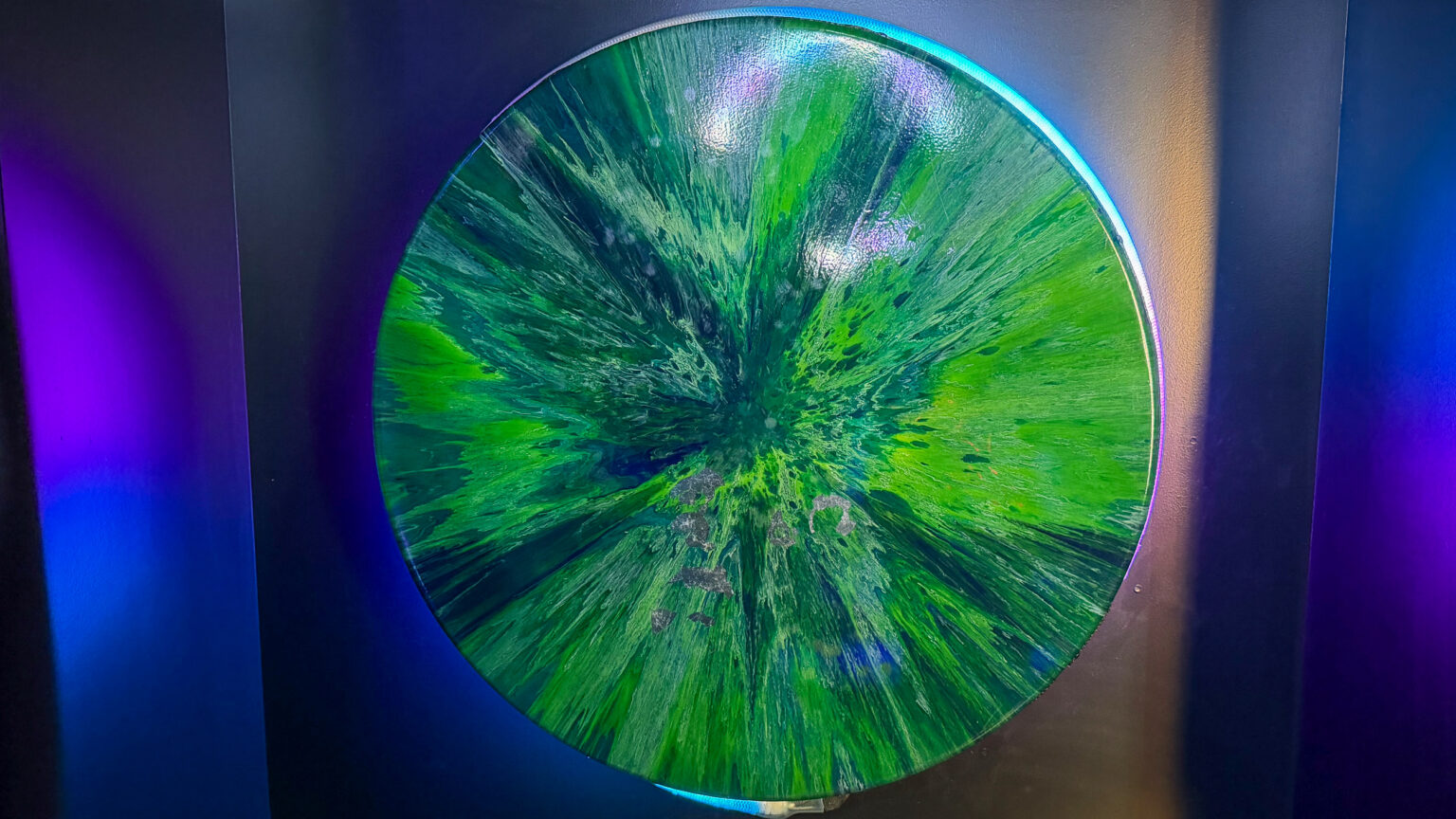
The music of the Grateful Dead is a central theme to the entire movie, which was made even more integral when Mickey Hart entered the picture (one of the two drummers for the Grateful Dead). Initially a bit skeptical about the whole thing, Mickey seemed to finally get it when he saw the skeleton suits in person and decided he wanted to be on the mountain playing drums as skiers and snowboarders soared overhead.


The connection between Chris Benchetler and the Grateful Dead dates back to Atomic’s first Grateful Dead collaboration. As Chris tells it, the Dead approached Atomic wanting to do a collaboration, but the Grateful Dead weren’t as popular in Austria, so Chris stepped in to bridge the gap and convince Atomic that the collaboration made sense.
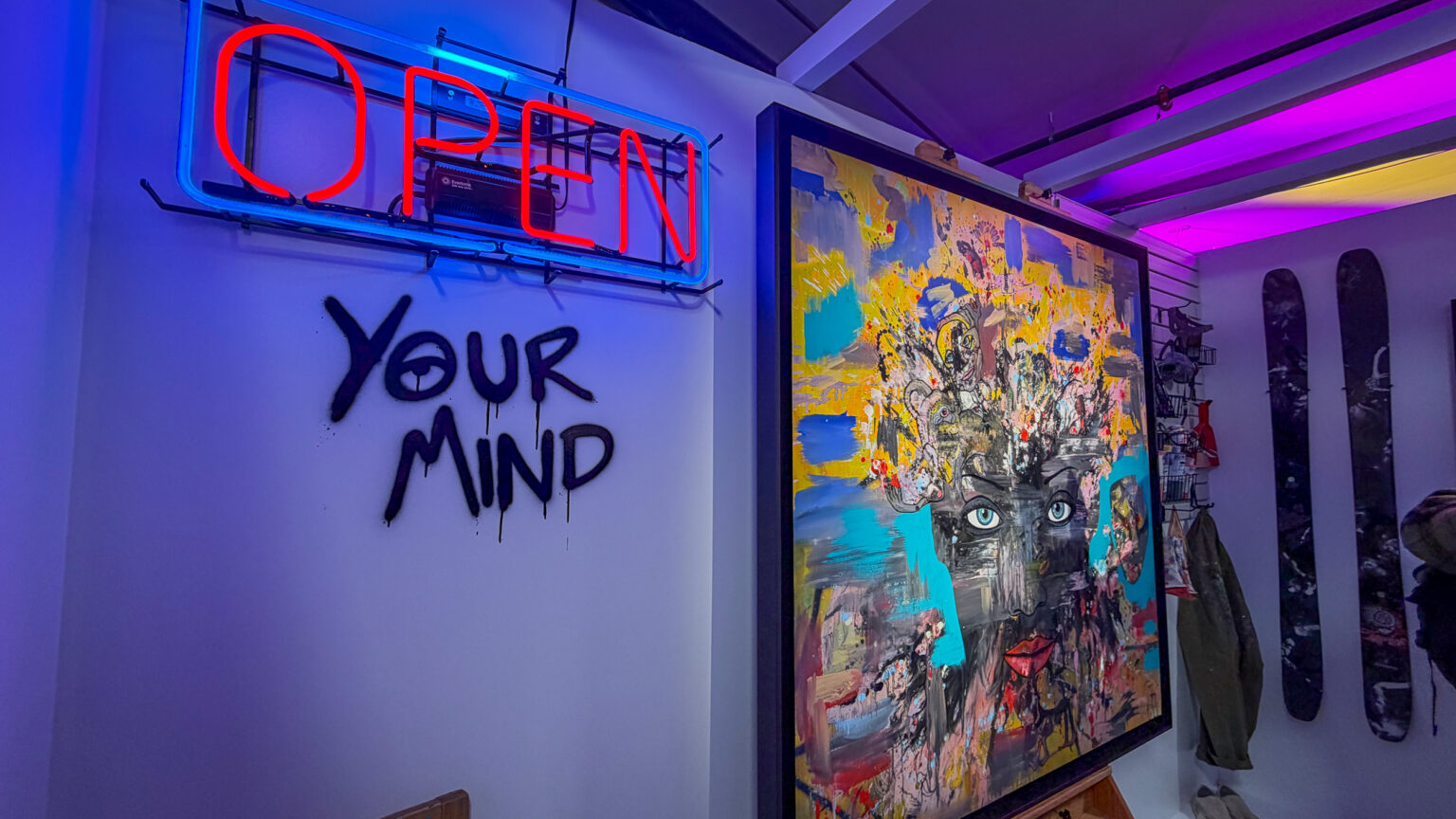
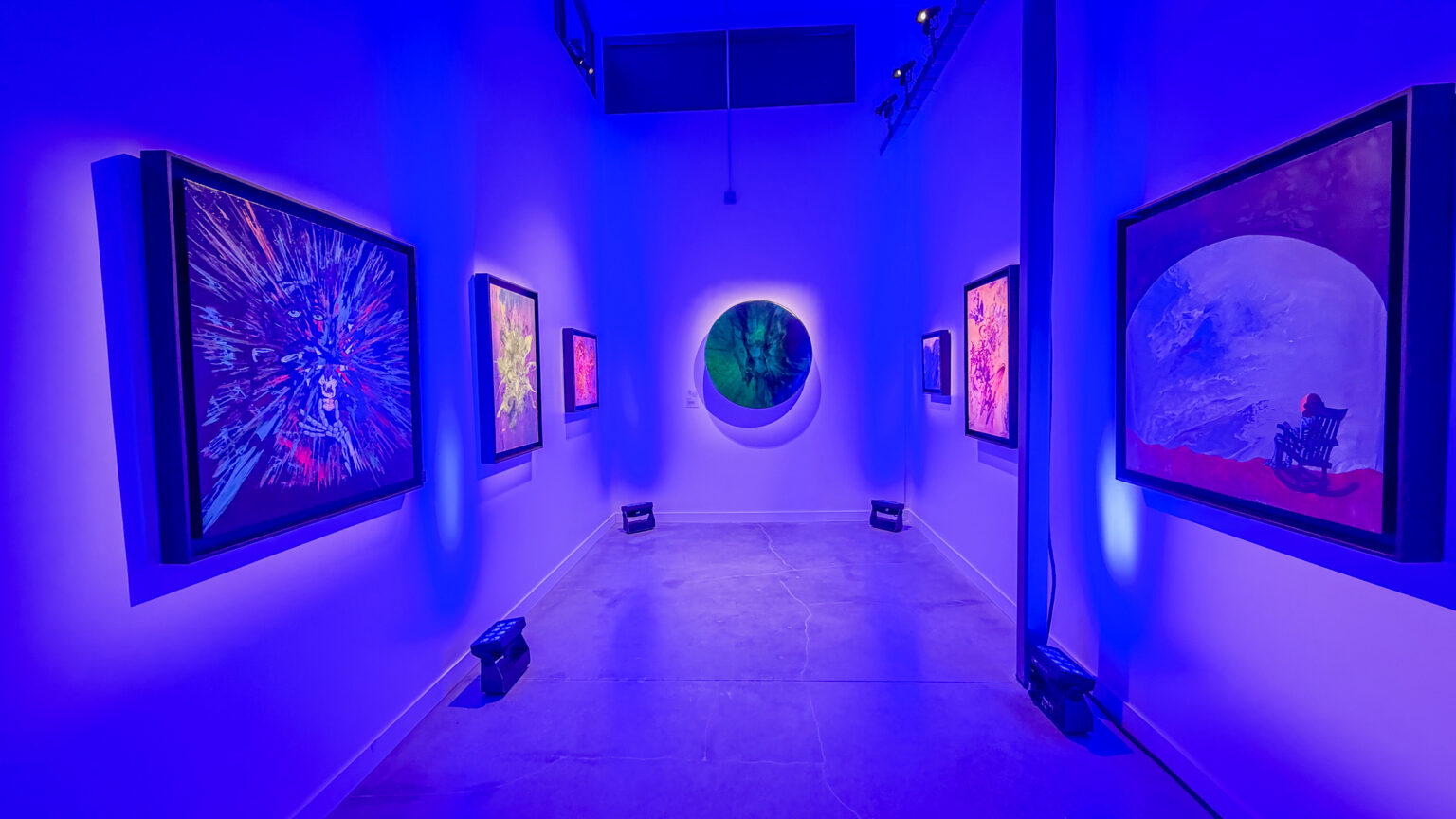

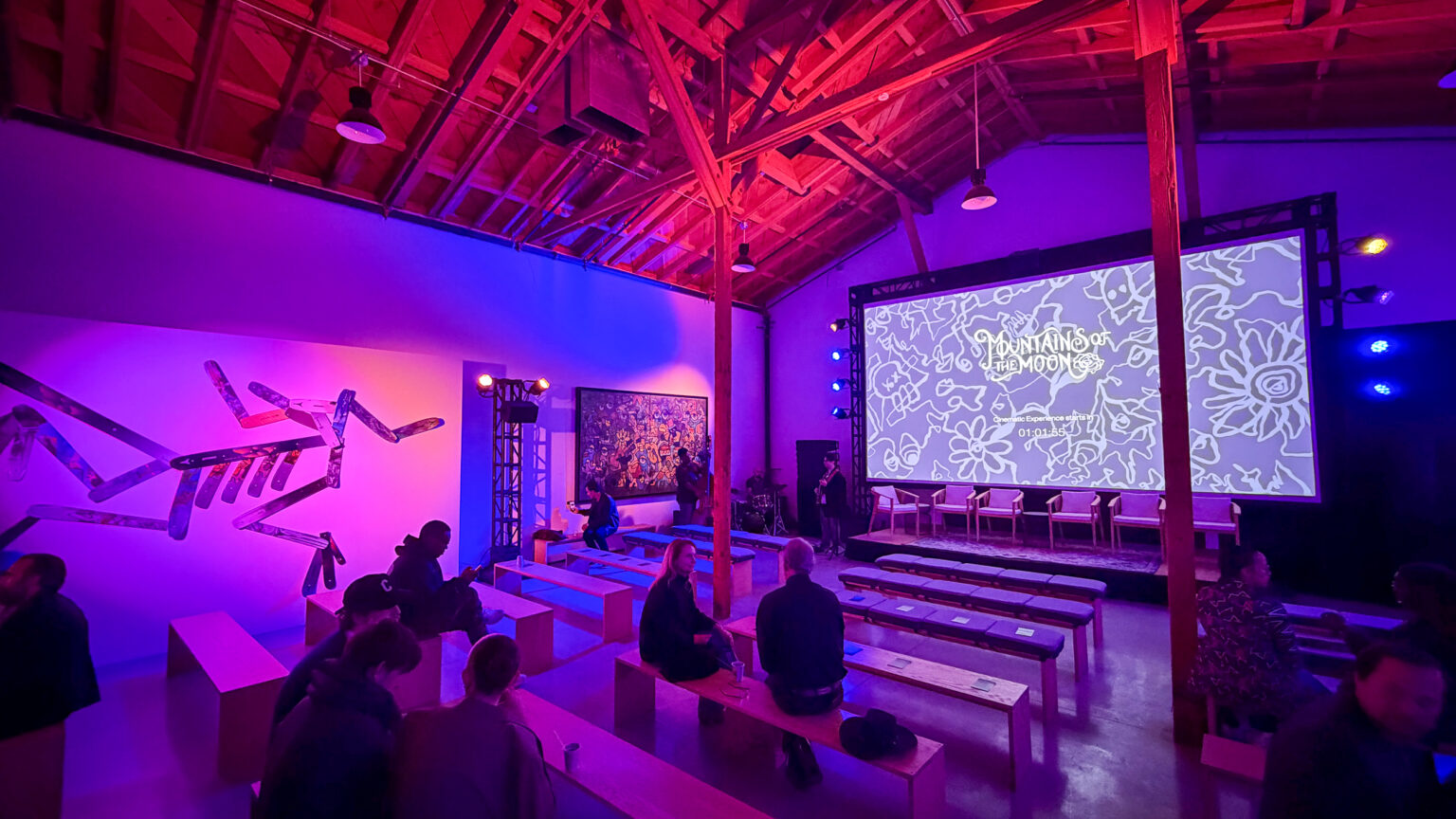
Back to MOTM, once you factor in the creative connection between Benchetler and Hart’s artwork and overall vibe of the film, the soundtrack is a perfect fit. That artwork spreads its way through the film in the form of Benchetler’s illustrations that are animated and set to the music of the Grateful Dead, and Mickey’s artwork displayed on his drumheads as he played along to part of the soundtrack that he scored himself. It all works together to become the abstract artwork that Benchetler envisioned.
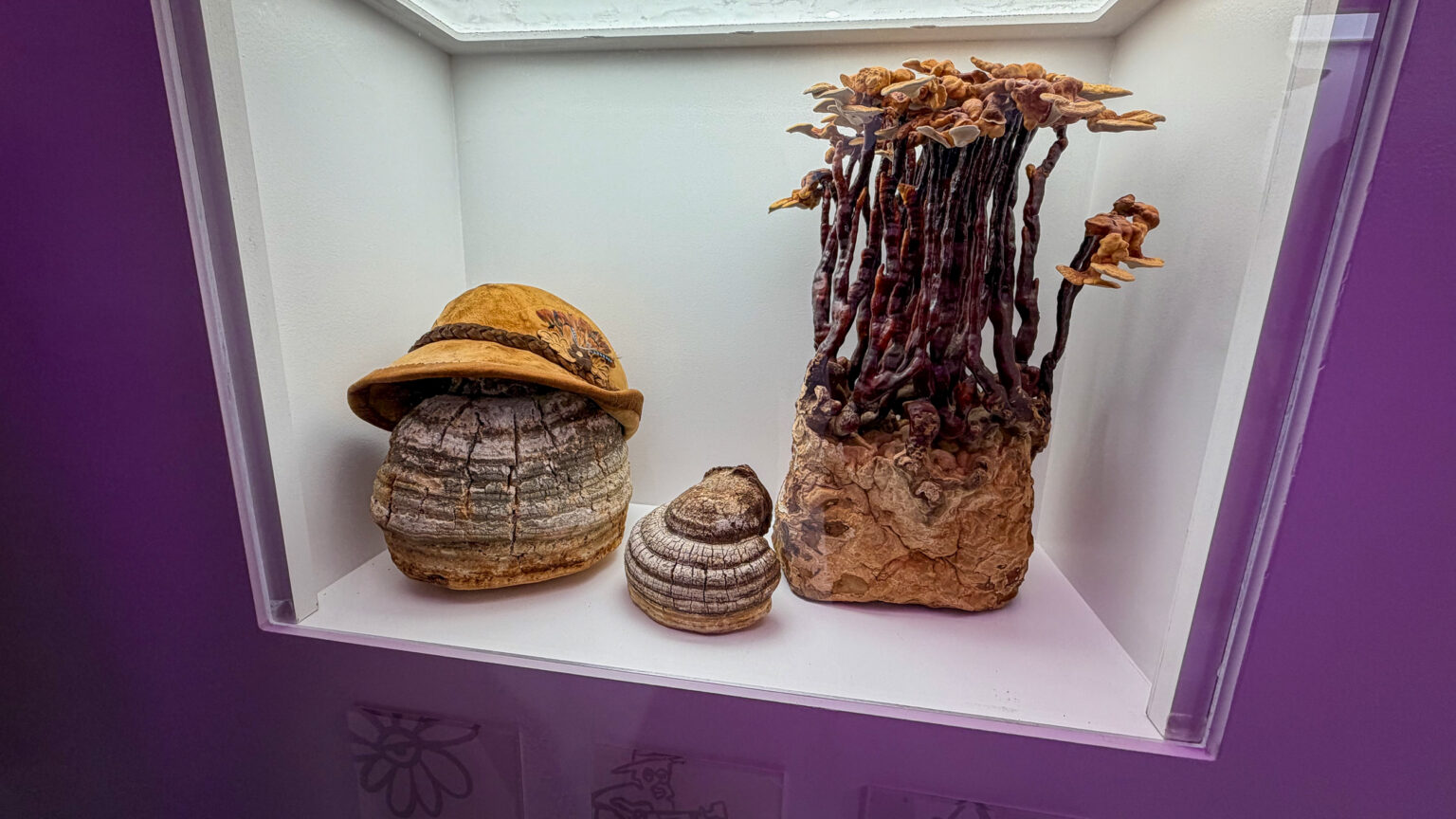
The final layer to this masterpiece is a heavy dose of mushrooms – mycology, that is. Narrated by Mycologist Paul Stamets, the film features a heavy dose of fungal interludes. Between all of the different art forms, the lighting, the action, and the underlying themes, it’s a film that can be as deep as you want to take it, but to put it simply, Stamets concludes, “That’s what Mountains of the Moon is. The threads we’re following through our lives, and the threads of universal consciousness.”
Go See it For Yourself

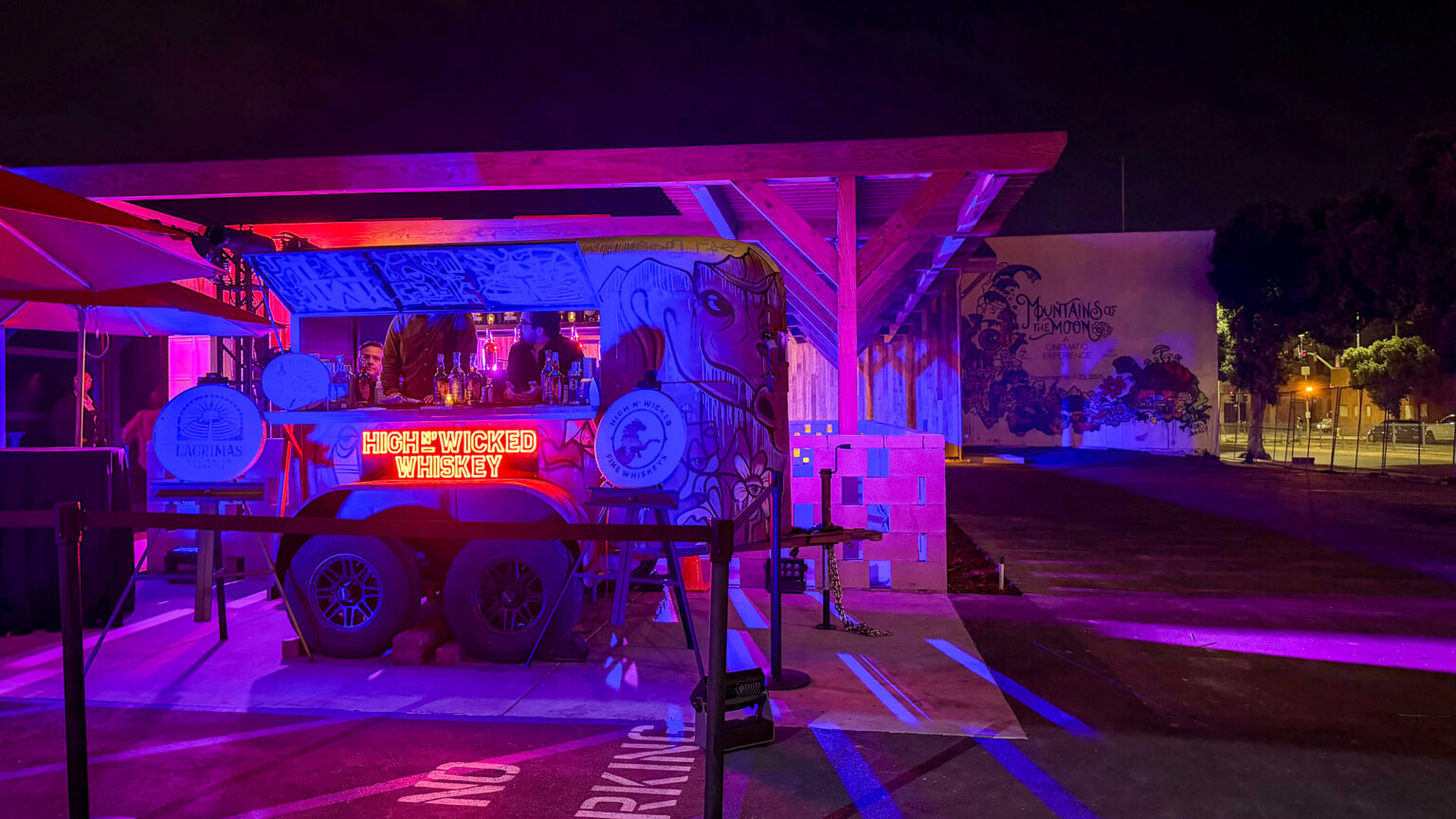

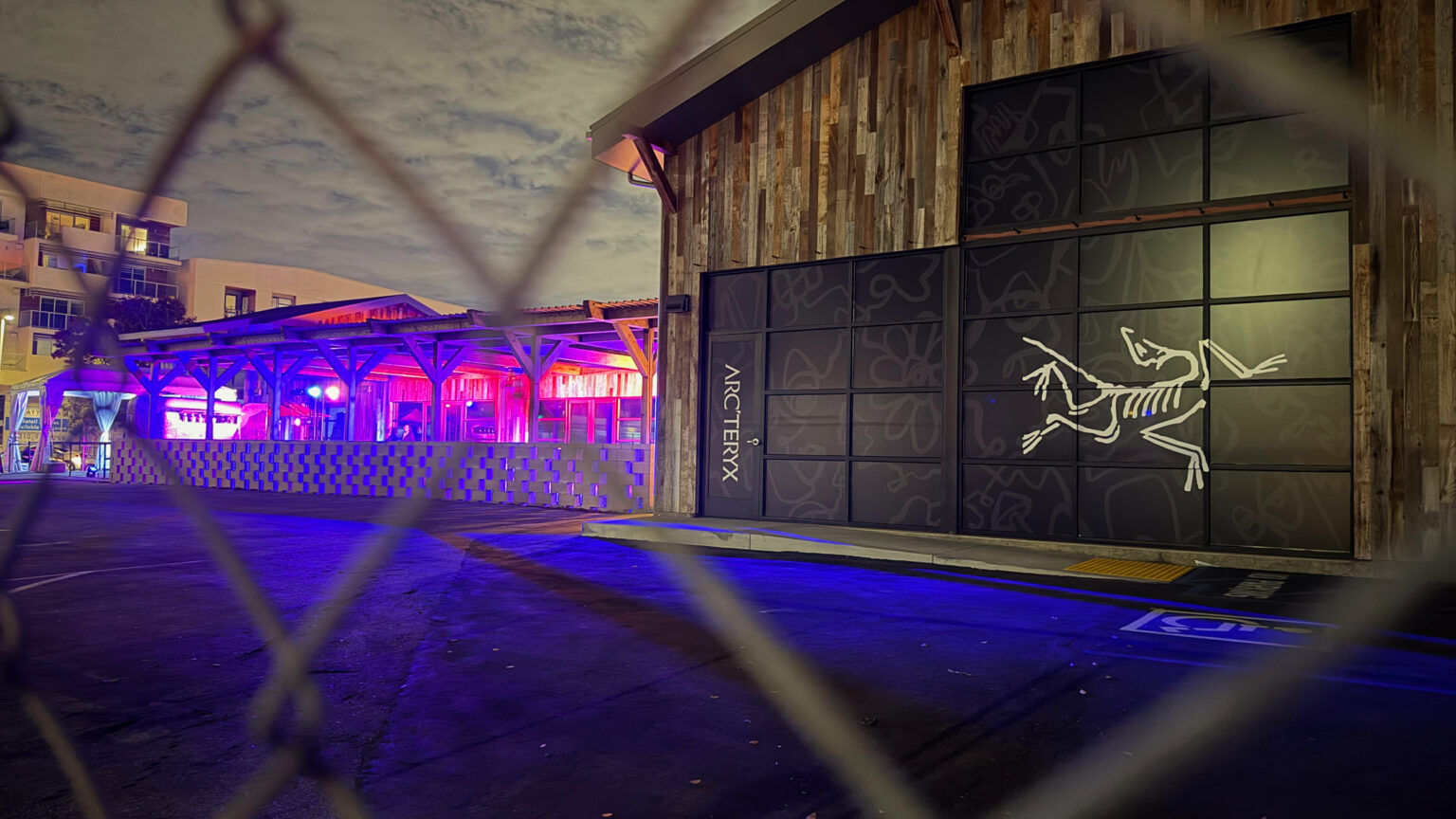
I can sit here and describe Mountains of the Moon in thousands of words, but it’s truly something you have to see for yourself. In a world of direct-to-YouTube premieres and near constant ‘shredits’, Mountains of the Moon feels like something special – because it is. As such, it won’t be available on YouTube any time soon (although you can check out the MOTM teaser to get a taste).
Currently, Mountains of the Moon is in the midst of its 9-day public immersive exhibition. The same exhibition that we got to see during the Global premiere on November 15th as a guest of Arc’teryx. The exhibition in Santa Monica runs until November 23rd, but if you don’t already have tickets, it’s completely sold out.
Additional immersive screenings will take place on an Arc’Teryx & Evo tour that is scheduled for Tahoe (Jan 8), Denver (Jan 15), Salt Lake City (Jan 22), and Whistler (Feb 7). Additional screenings include the Arc’teryx Europe Winter Film Tour with stops in Manchester (11/25), London (12/9), and Paris (12/11). Additionally, there are showings scheduled for Bulgaria, Florida, Maine, and California, and likely more to come. Head over to the Mountains of the Moon page on Chris Benchetler’s site to stay up to date with future showings, and let the light change how you see the world.
The post Light Up Skeleton Suits, LED Bike Wheels, Mushrooms & The Grateful Dead: MOTM Has it All appeared first on Bikerumor.


 2 days ago
2
2 days ago
2
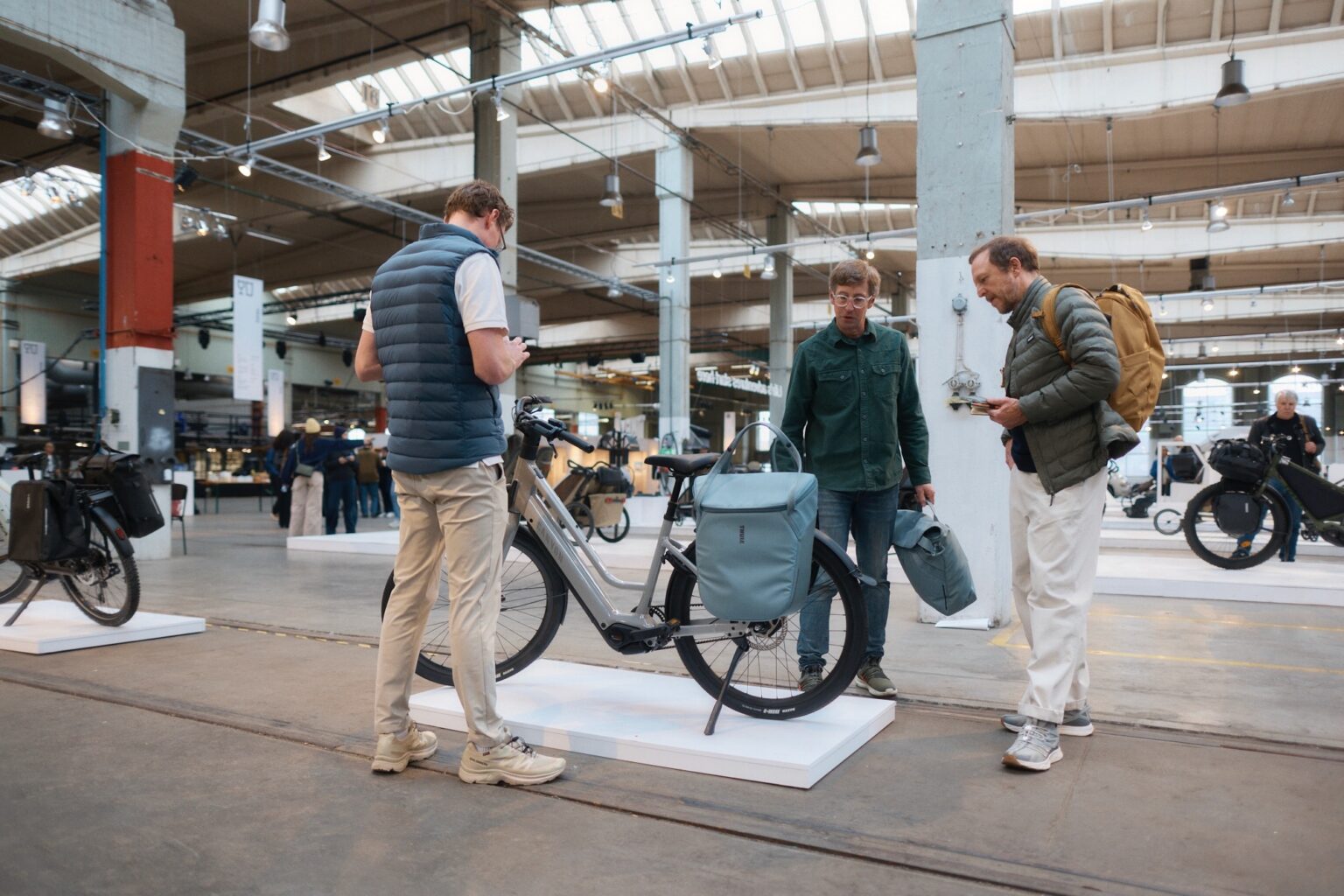

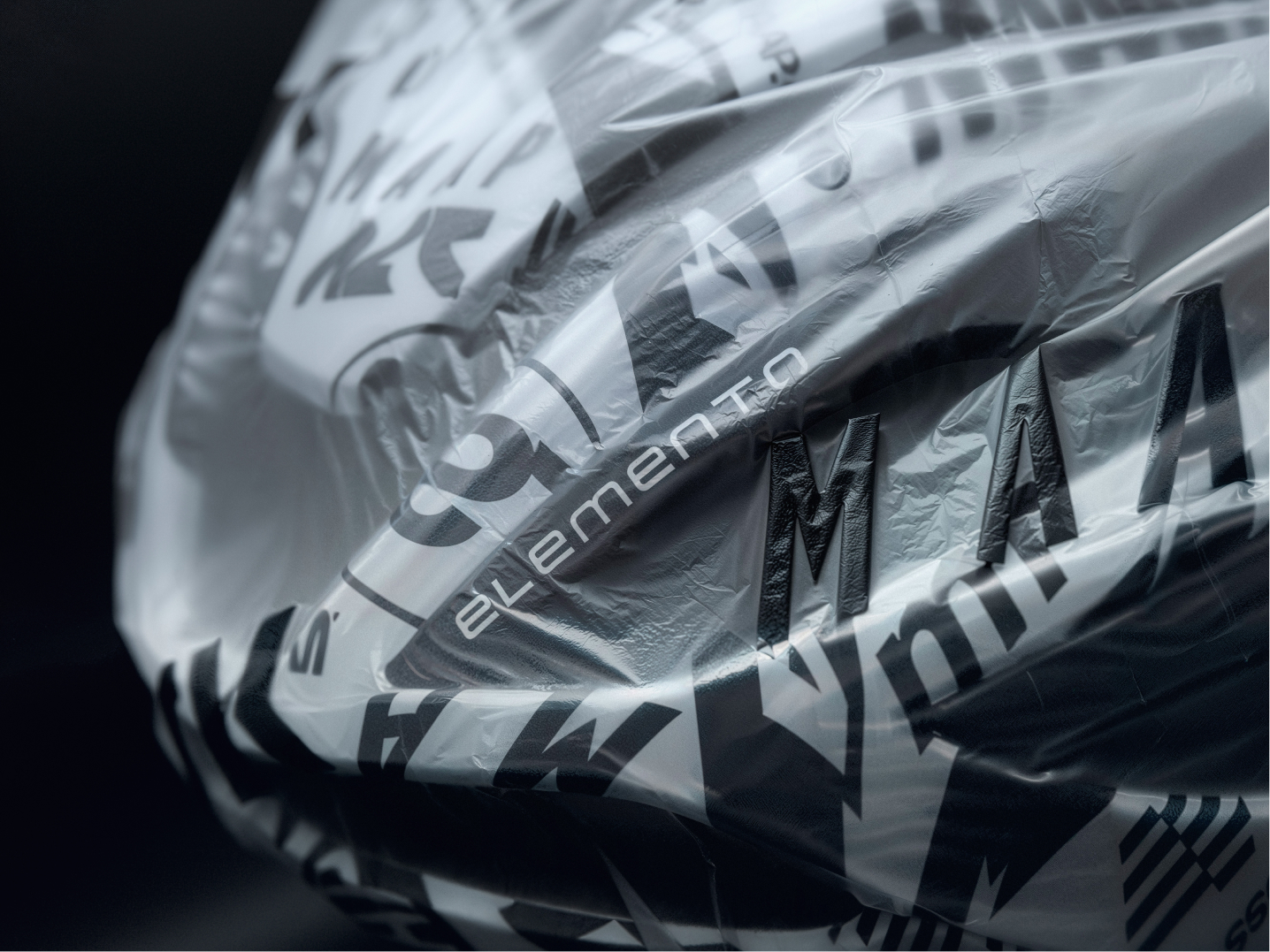



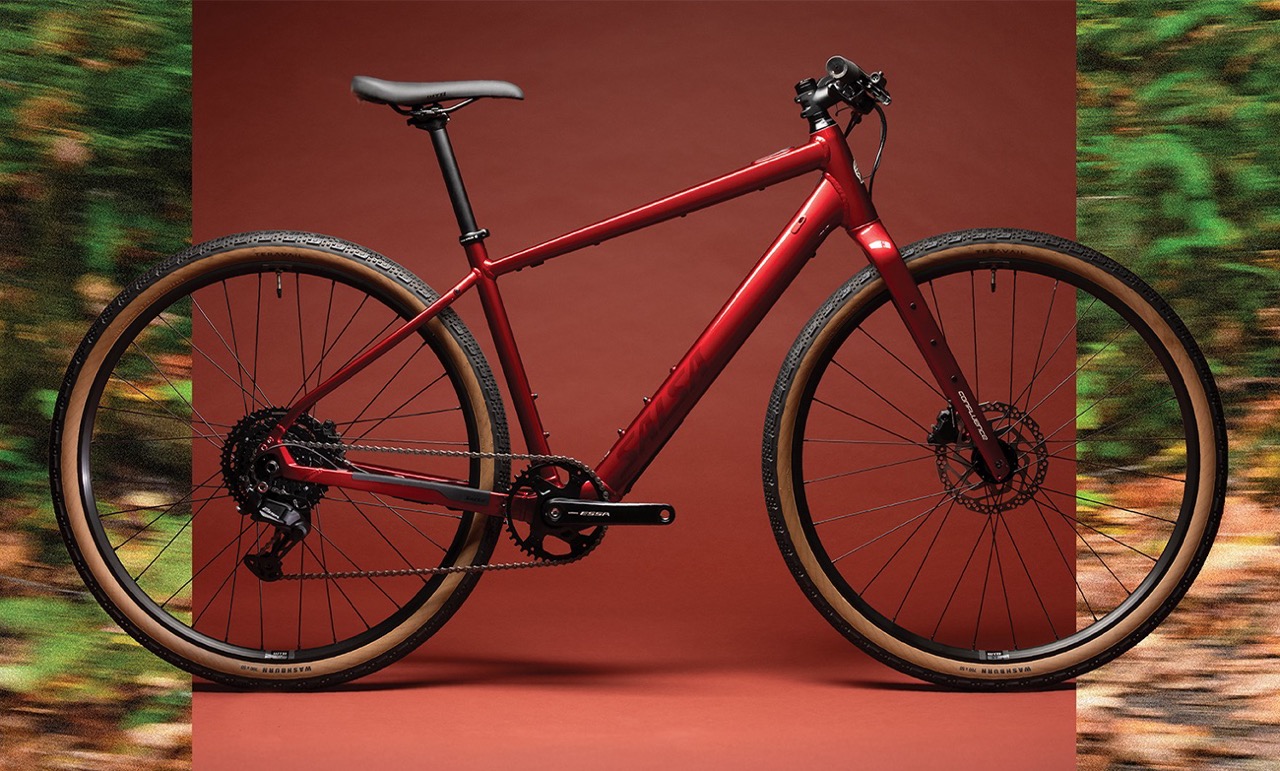

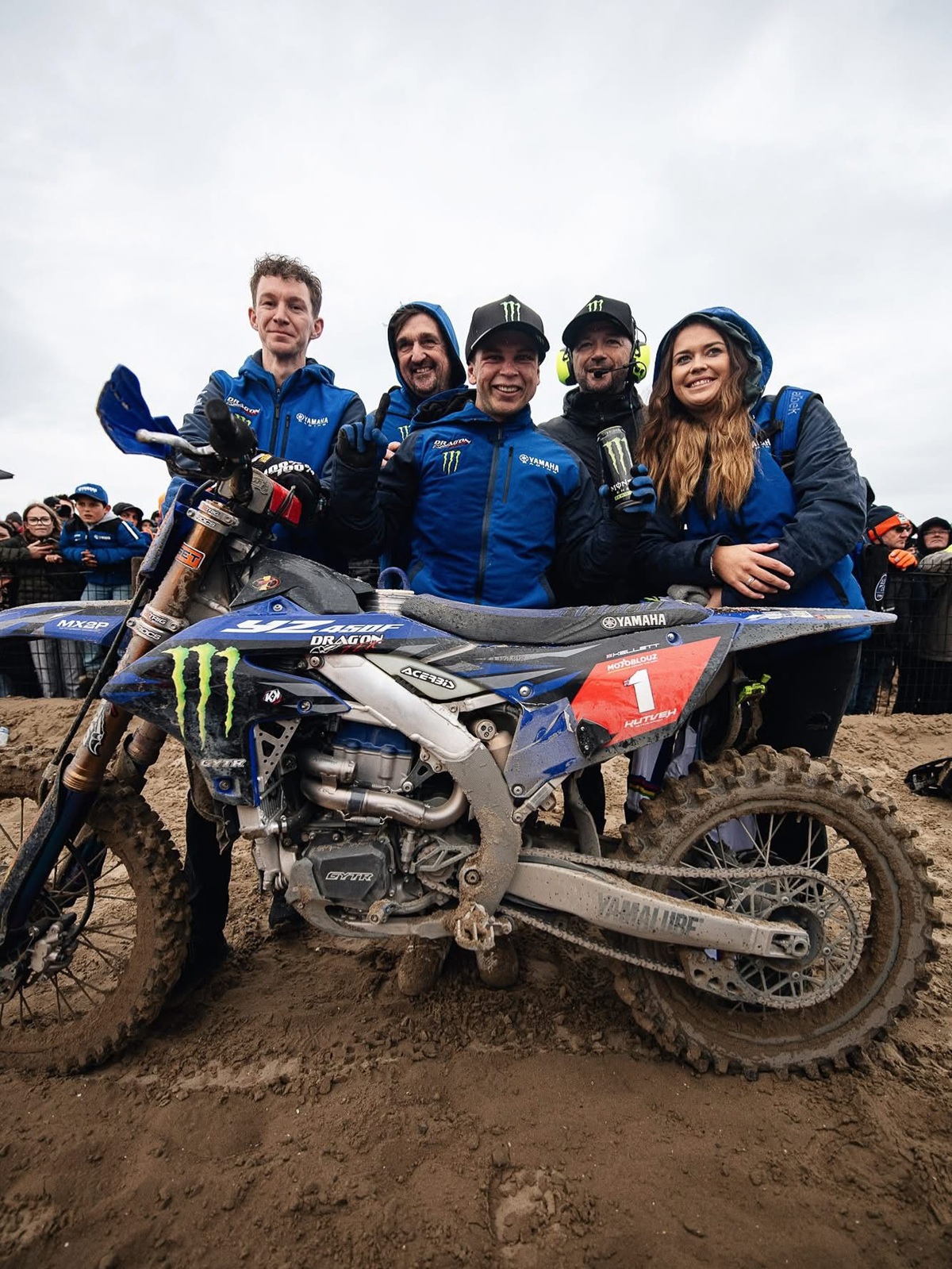

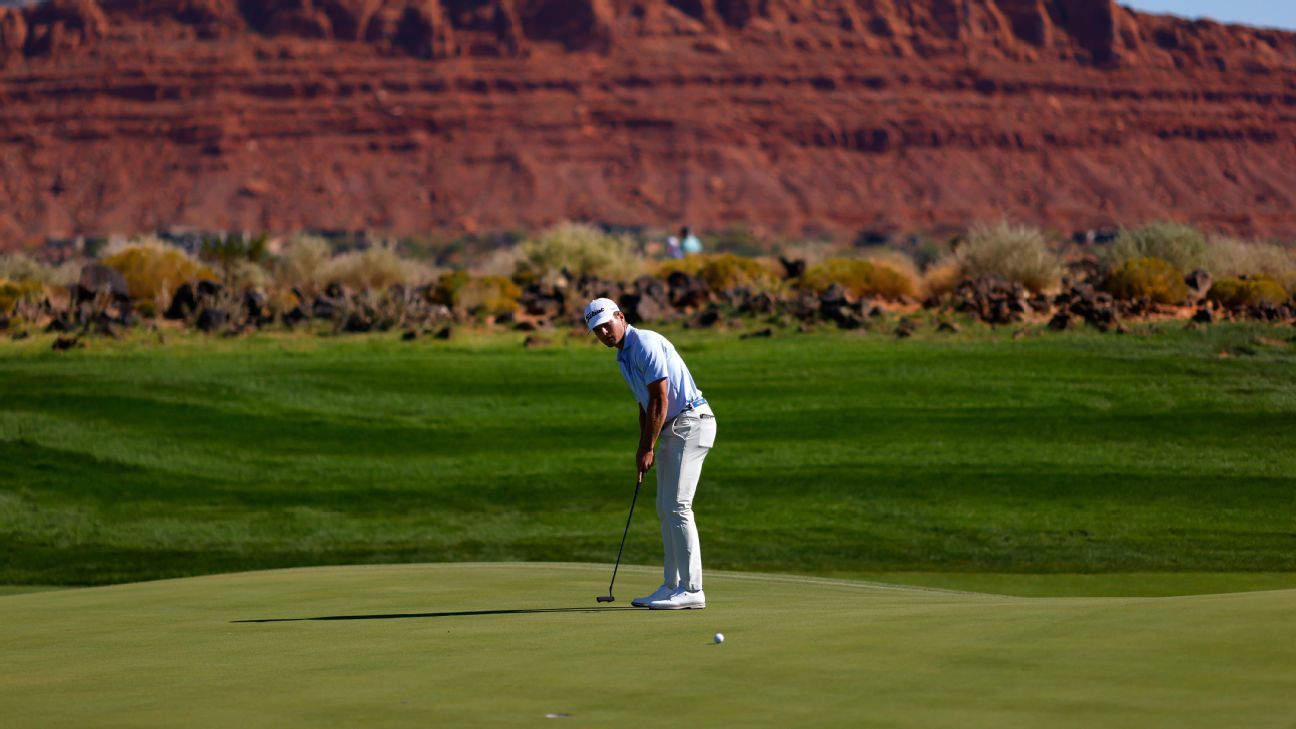
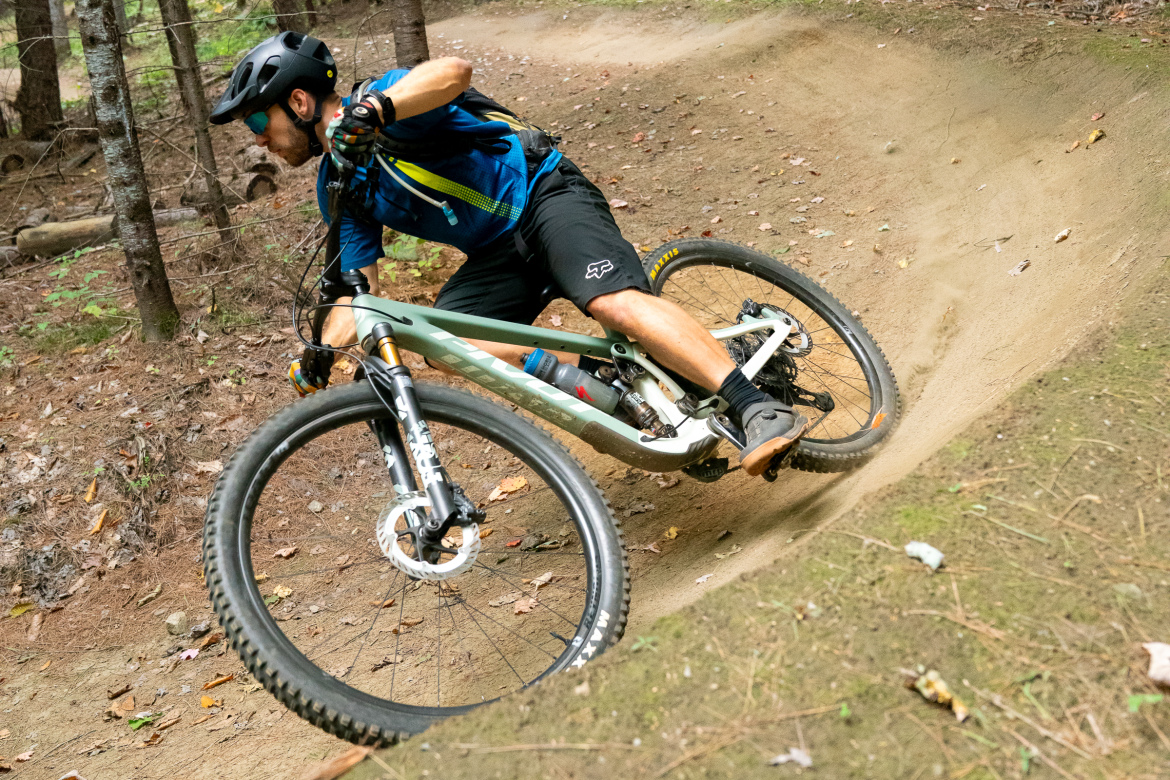



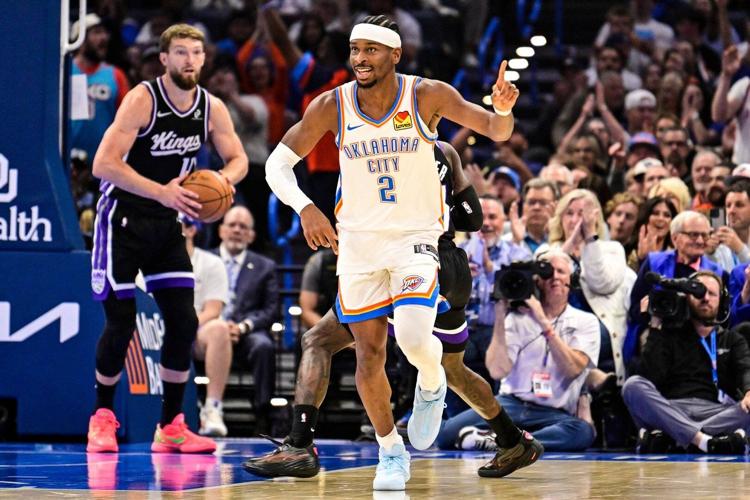

 English (US) ·
English (US) ·  French (CA) ·
French (CA) ·